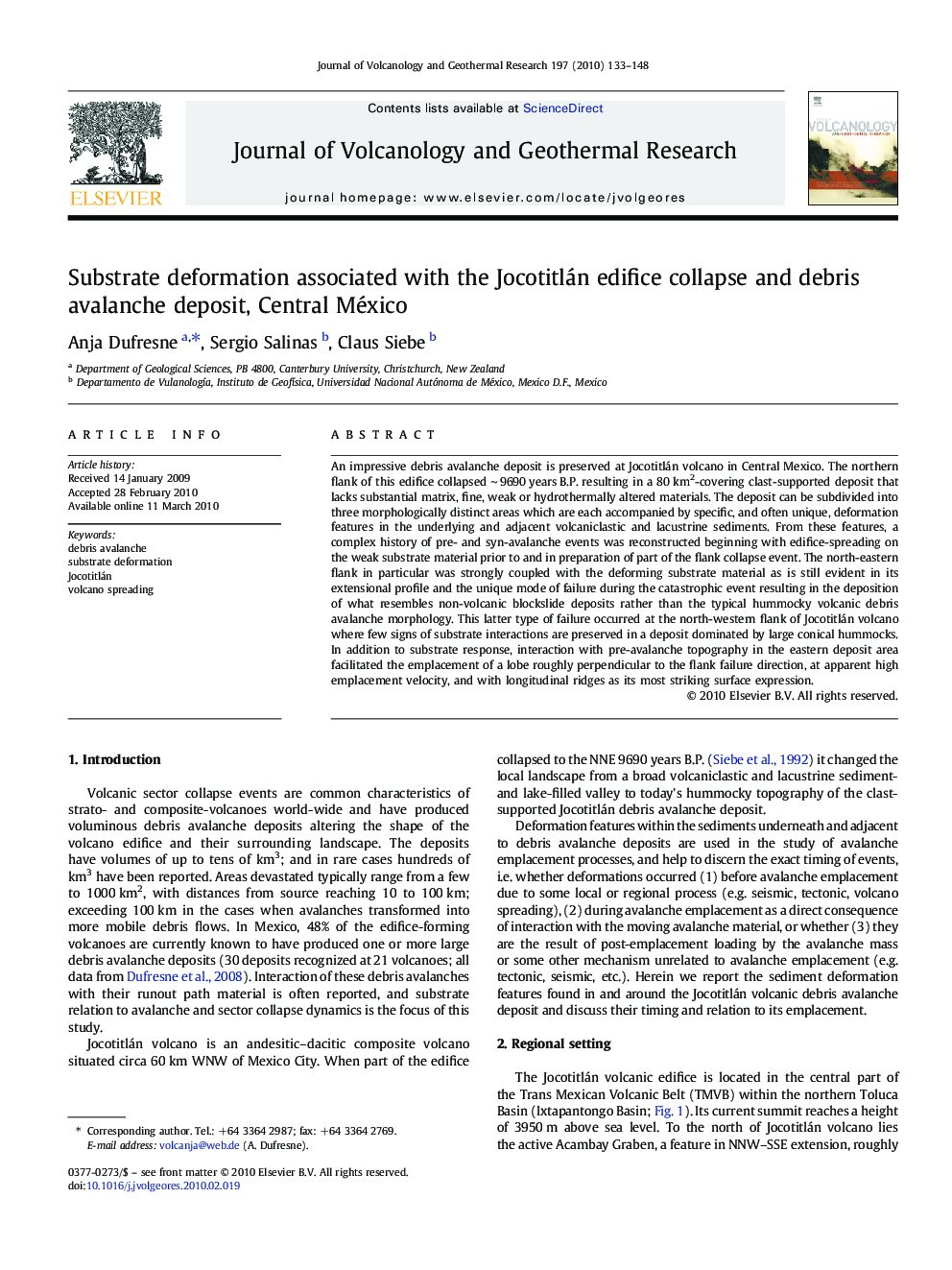| Article ID | Journal | Published Year | Pages | File Type |
|---|---|---|---|---|
| 4713763 | Journal of Volcanology and Geothermal Research | 2010 | 16 Pages |
An impressive debris avalanche deposit is preserved at Jocotitlán volcano in Central Mexico. The northern flank of this edifice collapsed ∼ 9690 years B.P. resulting in a 80 km2-covering clast-supported deposit that lacks substantial matrix, fine, weak or hydrothermally altered materials. The deposit can be subdivided into three morphologically distinct areas which are each accompanied by specific, and often unique, deformation features in the underlying and adjacent volcaniclastic and lacustrine sediments. From these features, a complex history of pre- and syn-avalanche events was reconstructed beginning with edifice-spreading on the weak substrate material prior to and in preparation of part of the flank collapse event. The north-eastern flank in particular was strongly coupled with the deforming substrate material as is still evident in its extensional profile and the unique mode of failure during the catastrophic event resulting in the deposition of what resembles non-volcanic blockslide deposits rather than the typical hummocky volcanic debris avalanche morphology. This latter type of failure occurred at the north-western flank of Jocotitlán volcano where few signs of substrate interactions are preserved in a deposit dominated by large conical hummocks. In addition to substrate response, interaction with pre-avalanche topography in the eastern deposit area facilitated the emplacement of a lobe roughly perpendicular to the flank failure direction, at apparent high emplacement velocity, and with longitudinal ridges as its most striking surface expression.
